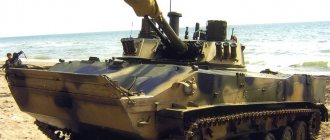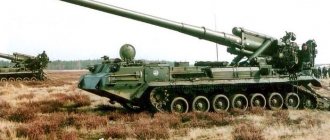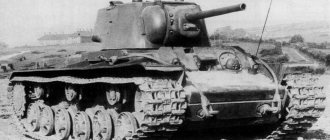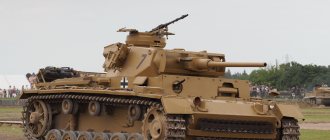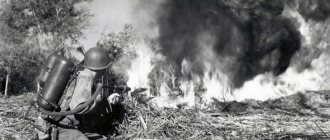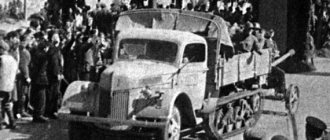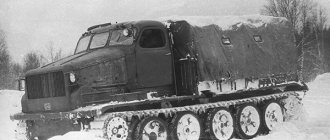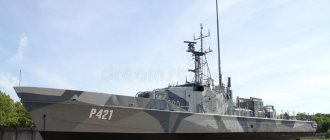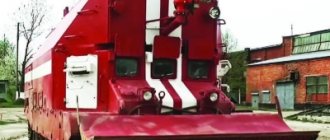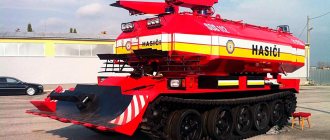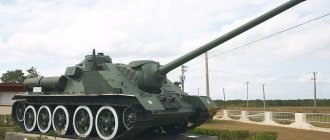| |||||||||||||||||||||||||||||||||||||||||||||||||
History of construction
In 1932 Demag AG
With the participation of Wetter (Ruhr) Anticipating the need for light artillery tractors, they began work on such a tractor.
It was assumed that the tractor would be used to transport soldiers and tow 37 and 50 mm anti-tank guns, 20 mm anti-aircraft guns, 75 and 150 mm infantry guns. The prototype developed according to these assumptions, marked D II 1
, was ready early in 1934.
It was equipped similarly to the next prototype in an in-line engine, a BMW 315
with 28 hp.
The third prototype was also equipped with a carburetor engine. BMW 319
42 hp, which was too little power.
As a result, a fourth prototype was created, designated D II 4
which is powered by a
Maybach HL 38 TRKM
. It became the standard for the pre-production series, production of which began in 1937.
In 1939, based on experience with prototypes and tractors from pre-production production, the final version was developed, which received factory markings. Demag D 7
and military
Sd.Kfz.
10 .
This version was introduced in 1939 for mass production, which lasted until 1945. They were produced by the factories Demag AG
,
Adler
,
Bussing-Nag
,
MWC
,
Saur
in Germany, and also after the occupation of France, also by the French factories
Lorraine
,
Panhard
,
Simca
.
In total, about 17,000 cars of this type and versions were produced. Versions Sd.Kfz. 10
- Sd.Kfz.10
- basic version, artillery tractor, crew of 2-6 passengers (guns) - Sd.Kfz.10 / 1
- a light chemical reconnaissance vehicle, equipped with a gas analyzer and adapted for transporting military personnel of the chemical reconnaissance section and their equipment, crew - 6 people, weight - 4900 kg. - Sd.Kfz.10 / 2
is a light decontamination vehicle that can accommodate 8 lime tanks and a spreader located above the rear wings, crew - 4 people, weight - 4800 kg. - Sd.Kfz.10 / 3
- a passenger decontamination vehicle, equipped with a tank with liquid and a sprayer, crew - 2 people, weight - 4900 kg. - Sd.Kfz.10 / 4
- self-propelled anti-aircraft gun, armed with a 2 cm FlaK 30 cannon, crew - 7 people, weight - 4700 kg. - Sd.Kfz.10/5
- self-propelled anti-aircraft gun, armed with a 2 cm FlaK 38 cannon
Some vehicles were equipped with a 50 mm anti-tank gun. PaK 38
make them a self-propelled anti-tank gun[1].
Demag D7 Sd.Kfz.10 (1938)
Having become the owner of the remains of three cars, I wondered what to do next. After weighing all the pros and cons and taking into account the rarity of this car, I decided to begin its restoration.
First of all, everything was thoroughly washed from clay, dirt and loose rust.
After this, it became possible to carefully examine everything that was available.
Of the three existing bodies, one turned out to be bloated by the explosion.
The bathtub of the second body was in good condition. It was decided to take it as a basis.
Only half of the third body remained, but there were remains of a cable reel and several rollers.
An inspection of the engine showed its suitability for further restoration. I was surprised by the preserved inscription NL38 TRKM on the block.
All other parts and mechanisms were also carefully examined.
Next, all parts were sandblasted. This made it possible to determine their true condition.
First of all, it was necessary to restore the “bathtub” - the main load-bearing part of the machine. First, we opened the torsion bar boxes and replaced all the edges in contact with the floor.
On the starboard side, all the faceplates of the torsion bar sleeves had to be replaced, since the old ones were completely rusted.
The most tedious task was welding hundreds of holes on the sides and floor of the “bathtub” of the body and replacing all the rotten areas - the years turned out to be merciless for the metal.
A lot of time was spent replacing the edging around the perimeter of the “bathtub” and making the sides. The difficulty was caused by the fact that we had to work with metal up to 3 mm thick on large planes (side length 5 meters). The rear part and the engine shield were remade, and the instrument panel was restored (it probably turned out to be the most intact part of the body)
It's time for the wings. The work was also not easy - replacing the edges and giving it a shape - making a wing out of a “cake” is a bit difficult. It was not easy to make door tracks, internal partitions and drawers. The samples assembled from rusty pieces only vaguely resembled their original appearance.
Simultaneously with the body work, work was carried out to restore the chassis. But if at least something has been preserved from the body, then from the chassis there are mostly only samples that are not suitable for further use. Only the torsion bars and some load-bearing cast iron parts were intact. Everything else had to be made again. The sleeves and trunnions of the roller levers were the first to be restored. Miraculously, it was possible to restore the gear housing of the right drive wheel, which had been mutilated by the explosion.
The track tensioning mechanisms and front wheel hubs have been completely rebuilt. All that was left of the front axle was a triangle and steering knuckles (which could only be disassembled with the help of a sledgehammer and an autogen). The spring package was assembled by going through all the leaves from the existing sets from three cars. Having restored the steering linkage and selected bearings for the hubs, we assembled the front axle.
Once the body and chassis parts were prepared, it was time to begin assembly. First of all, we primed and painted the “bathtub” of the body and the internal cavities of the torsion bar boxes, installed the roller sleeves and levers, and installed the torsion bars themselves.
Now there is an opportunity to weld the floors.
After that everything was finally primed. Then we began assembling the main body parts: we installed the engine shield with the instrument panel, the central box with door guides, and the rear part of the body.
At the same time, work continued on the restoration of the chassis. After the oil in the shock absorbers was changed (and they turned out to be completely intact!) and all the parts were primed, the front axle was hung in its place. The next labor-intensive operation was the manufacture of the track wings, but after some time both the front fenders and the track wings with mudguards were already on the car.
The first stage of work has been completed. Demag made room for another car, and he himself went to participate in exhibitions. First to the Oldtimer Gallery in Crocus Expo, then to the exhibition of captured equipment, timed to coincide with May 9 in the Podolsk region.
Having been caught in the rain several times while moving around exhibitions, Demag became covered with a “noble” patina and waited for its turn to “work” for some time.
And I waited...
And another forced pause. Moving to another workshop.
And in a new place...
Top
